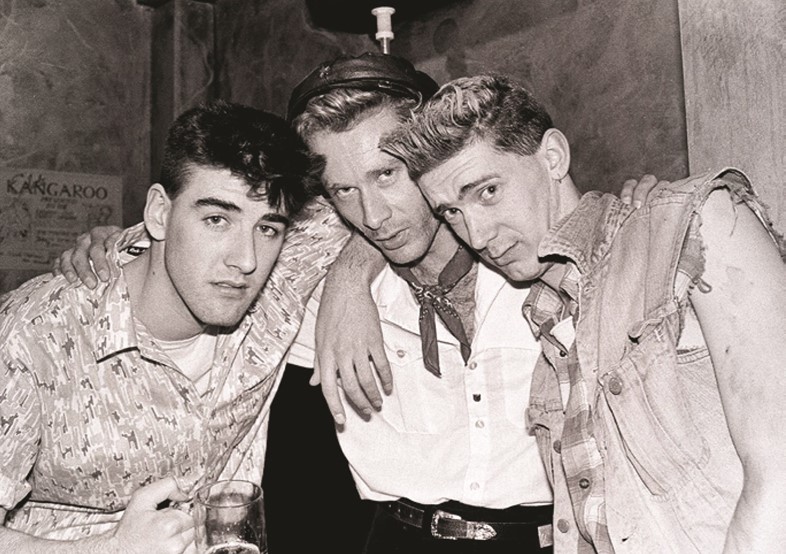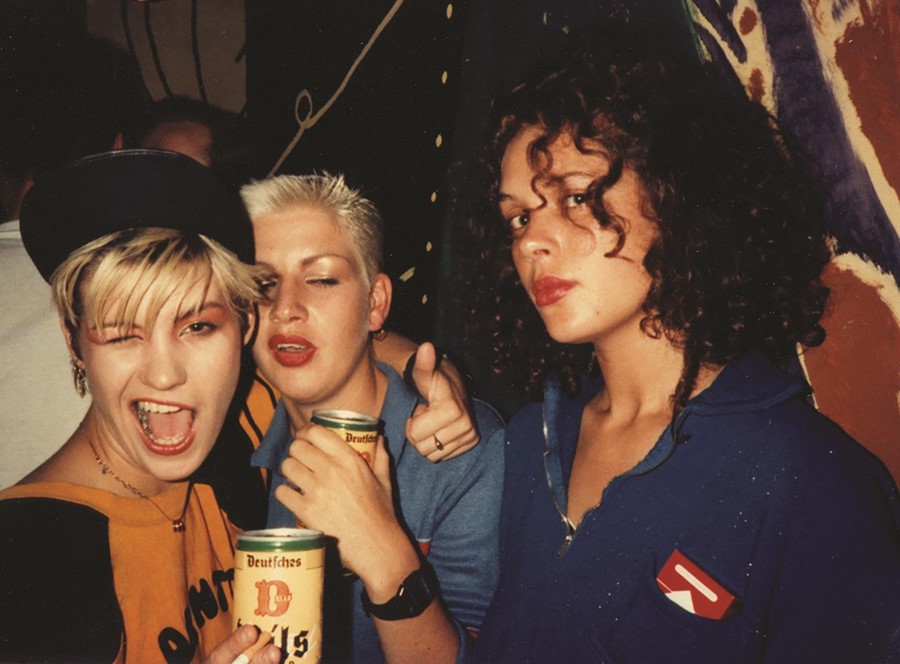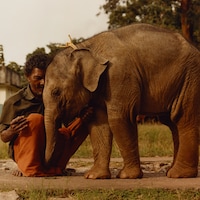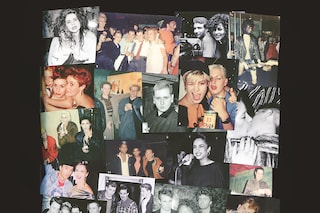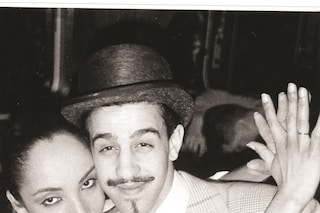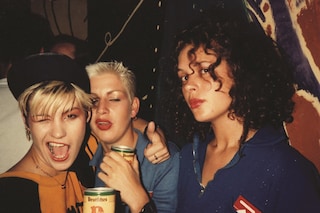Photographer Graham Smith documented the glory days of the Wag Club on Wardour Street, which hosted David Bowie, John Galliano, Leigh Bowery and Neneh Cherry
When a venue on Wardour Street called Whiskey A Go Go was rebranded as The Wag Club in the 80s, London’s music and club scene was unequivocally changed. It came in the midst of the city’s creative peak, where London was a melting pot of local and international talent on the verge of who we now know as icons.
“It was a time when anything seemed possible”, the club’s manager, then-CSM student, musician and promoter Chris Sullivan, told the Independent in 1994. Like many others in the club scene, Sullivan was a fan of The Blitz Club – who his friends, Merthyr Tydfil and Steve Strange, ran – but he wasn't particularly taken by the ‘electro, big hair and eyeliner vibe’. Instead, Sullivan cut his teeth throwing warehouse parties, which he then brought to the West End with Wag. With that came London and the world’s most exciting artists, fashion designers and musicians, including Boy George, Jean-Paul Gaultier, Neneh Cherry, Leigh Bowery, George Michael, Keith Richards, Joe Strummer, Robert De Niro, LL Cool J, Prince, Madonna, David Bowie (who filmed his “Blue Jean” video there) and John Galliano through its doors.
With a different music genre blasting through its speakers on different nights of the week – from jazz, funk, disco to reggae, the Wag Club is credited as one of the first UK clubs to feature hip-hop, rare groove, easy listening, house music, acid jazz and bhangra. It’s also said to have pioneered the retro ‘dance’ jazz revival. “We blew the bloody doors off, causing a wave of hip-hop fanaticism throughout the capital. Folk that had turned up in 50s suits or ripped Levi’s came back the following week in tracksuits and backwards baseball caps,” once recalled Sullivan.
For almost two decades it brought together people from all ages, races and class together. In typical fashion for all our city’s cultural lynchpins, the club is now gone and its site turned into an O’Neills pub. However, photographer Graham Smith was there with his camera to capture the glory days – a series of images he shares with us here. “I just carried a camera with me for about five or six years, and became obsessed with photographing all my mates around me”, he tells us as we jump on the phone with him to talk about Wag as Sullivan launches Chris Sullivan Presents The Wag (Harmless) CD. Not only recognised for chronicling the vibrancy of 80s clubland, Smith also designed graphics and record sleeves, such as Sade’s Diamond Life and co-authored (alongside Sullivan) the book We Can Be Heroes – positioning him as a key pillar of London’s hedonist heydey.
Tell us about the atmosphere in the Wag Club.
Graham Smith: I mainly went to Wag Club for the first few years, so this is probably about 1985. There was a club called the Beat Route (Le Beat Route) and for me, my three favourite clubs from the early 80s period were Blitz Club, Wag Club and Beat Route. What I loved about them was that the times were so different then. There wasn’t technology – no mobile phones, no internet. You had to try harder to find out about these places, and most people had no interest in doing that so it ended up being quite a small band of people that actually attended – people who were actually looking for something a bit more underground! They were underground because no one was writing about them. Back then there was only The Face and i-D (magazines), and they were the only two publications around at that time. There was much more mystique to clubbing then, the only way you would find out about these places was by perhaps hanging out at the right record shop, or around Kensington Market – which was around at the time. It was all word-of-mouth.
“There was much more mystique to clubbing then, the only way you would find out about these places was by perhaps hanging out at the right record shop, or around Kensington Market – which was around at the time. It was all word-of-mouth” – Graham Smith
What separated Wag from any other club in the 80s, what made it special?
Graham Smith: It was all like-minded people who were a bit savvy to have found out about these places, so hence the damn good time. Music was another element. Now we get access to music so easily through having so much of it everywhere, whereas back then if you wanted to listen to stuff you’d have to go out. My favourite DJ was a bloke called Hector. He would play a mix of northern soul, some afrobeat, some reggae – a real mix. You would hear the music that nobody was playing on the radio. That was a key factor at Wag.Every few months it seemed to be different attire down there. When the club first started it was all hard times and jeans and stuff. Then suddenly, retro suits caught on – Chris Sullivan was
Every few months it seemed to be different attire down there. When the club first started it was all hard times and jeans and stuff. Then suddenly, retro suits caught on – Chris Sullivan was a main indicator of that – and everyone was wearing 40s and 50s inspired suits. Then later in the Wag Club – the one which lasted longer than all the others – was the American influence of hip hop; you suddenly had people wearing sort of sports gear and stuff. It was cutting-edge. Nobody really knew what the word "style" was and suddenly everyone became obsessed with the word "style" and what "style" was.
Why was it so special to you?
Graham Smith: It was those elements, that was one of the few places you could go to meet like-minded people, especially if you made a bit of effort with your style to look the part, especially with the earlier clubs like Blitz. If you were dressed up you could get beaten up quite easily because a lot of people thought, "who the fuck do you think you are?" Once you were down there it was like it was a gang and that’s what was special about it, the camaraderie was brilliant down there and on top of that it was just damn good fun – but the bottom line was you were down there with your mates. By the end of the evening, your attire was totally caked with sweat and didn’t look so smart and the immaculate quiff you had as you walked in was probably drooping a bit. It was, as I say, happy days.
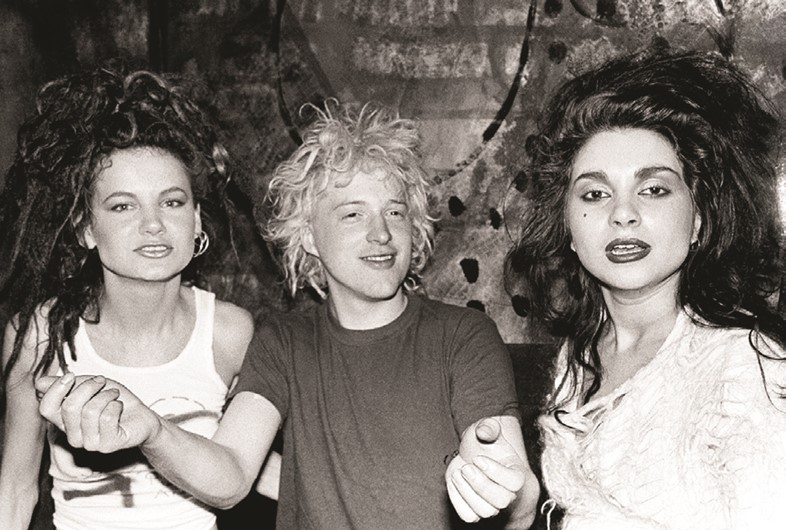
Why were you taking photos?
Graham Smith: I'm not a photographer, I just carried a camera with me for about five or six years and became obsessed with just photographing all my mates around me. I wasn't selling the pictures, I was just taking photographs of my mates and I had no intention of making that book (We Can Be Heroes). It wasn't until I turned 50 that I realised I had all these pictures and I had never put them in a photo album or anything. I sold a few to The Face and i-D when they started but that was about it. But when turning 50, I thought of doing a book with the photographs, otherwise, they would just sit in my loft and nobody would ever see them, and I feel that they're a bit of a social documentation of that period. I do feel quite passionate now and really pleased that I did it.
This country, we have always done youth culture so well, from the 50s and the teddy boys, through the mods, punks, skinheads, right up to the rave scene and today. It's all very documented today because everyone has a phone and is obsessed with recordings, but back then so few people had cameras, and I like to think what I did was my little bit of documenting just a few of those clubs that were around in the early 80s, that otherwise there probably would be no photographs of, simply because not many people had cameras down there because these clubs were quite exclusive – you didn't get paparazzi down there.
Do you think it was exclusive?
Graham Smith: I guess, looking back, it was. The Wag Club would be Chris or Holly on the door and the place would only hold around 300 people, but you had a lot more wanting to get in and so they turned (people) away. You had this fellow called Winston, who was this legendary bouncer, big West Indian guy, an absolute mountain of a fellow. He was such a lovely guy, everyone liked Winston, and he had a heart of gold and everyone seems to remember this guy's name. I have no idea what happened to Winston, but he was a damn good bouncer. It went on for years, Chris ran it for a long, long time, so it probably had different groups of people, he had it six nights of the week so it would attract different crowds on different nights, but they all had the same agenda when they went and they were just the cutting edge of what was going on at the time. You had to try harder to look the part to get in there and in return for your hard work you had a damn good night out.
“I think all the people there were the people who were looking for answers. They were more inquisitive, looking for alternatives, people weren’t catering for us – no one was catering to us” – Graham Smith
What was the general feeling of the 80s?
Graham Smith: I think we were a lot more naïve in a sense because we hadn’t been exposed to so much, but I think all the people there were the people who were looking for answers. They were more inquisitive, looking for alternatives, people weren’t catering for us – no one was catering to us. And so people made these nightclubs for themselves. So they were creating clubs for like-minded people and we ran them.
Before that, you did have nightclubs but they were either things like Samantha’s – which were posh clubs where you'd get things like Elton John and Rod Stewart and celebrities, for the super rich and all in the worst possible taste probably. Or you had suburban types where you’d get beaten up if you looked a bit different or spoke to the wrong person. Whereas with these clubs it was, as I say, for your mates and people that had a similar agenda to yourself – which was looking good, wearing the latest clothes, hearing the latest sounds and doing the latest dances. We did all think we were hip and happening. You look at the people that came out of those clubs; there were so many bands from the likes of Spandau Ballet and Adam and The Ants, all these 80s bands, Culture Club and Boy George, a lot of them were art students, a lot of creative souls.
The other interesting thing that came out of that was how a lot of people went on to have creative careers. They became writers: people like Robert Elms who was a sort of radio show bloke now, Steven Jones who's an OBE, and Grayson Perry used to go down to some of those clubs – he's an OBE. You had a couple people who have ended up winning Turner prizes who used to go down there, so there were only a few hundred people that would frequent these clubs but it's amazing how many creatives came out of it. Whether they were pop stars or fashion designers or artists. It gave you the confidence to take chances to step outside the norm to follow your heart. Everyone was feeding off one another.
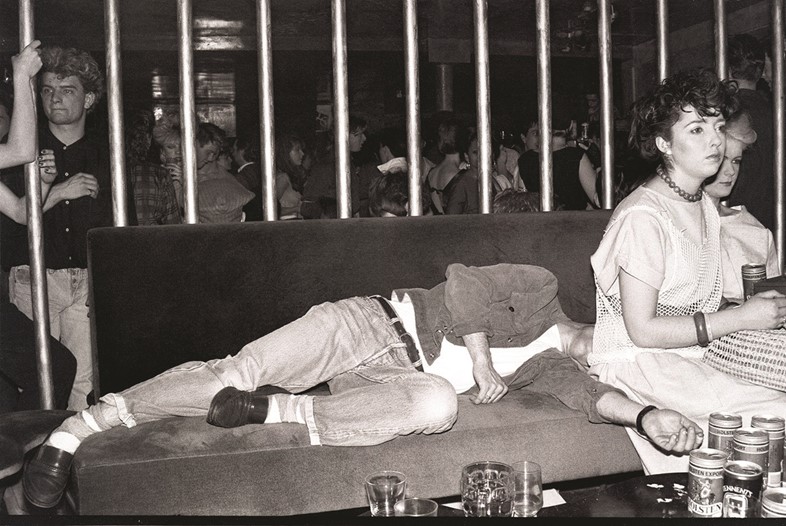
Do you think nightlife is as interesting to capture now?
Graham Smith: I always like to think there are really cool clubs going on somewhere, I mean I'm 57 and really shouldn’t know about them but I like to think they're happening somewhere, and it's totally right that I know nothing about them – that's the way it should be. However, I think the Wag Club would give any club a run for its money because they were so exclusive, they were underground. They weren't available to the masses because the masses simply didn't know about them so today, for that reason, I think they were more exciting then. I'm sure the clubs today will have the sound systems so much better, and different sounds, and so it creates an incredible energy and atmosphere, but I don't think it would have the decadence of what went on at, say, the Wag.
Do you think that an underground scene could exist in this era?
Graham Smith: Yes, to a degree, but the only way you could do it is (by) banning anyone taking in a mobile phone because they're gonna show imagery from it, and that defines the nature of what underground is, in that it doesn't really have immediate exposure. It's not commercialised – the whole point is that it's for a select few, but how you become that select few is that you have to sort of work on it. I'm sure there are exclusive clubs but I firmly believe it would be impossible to replicate the likes of those clubs because of technology and mystique. That would be my quote, that technology killed the mystique of nightclubbing.
